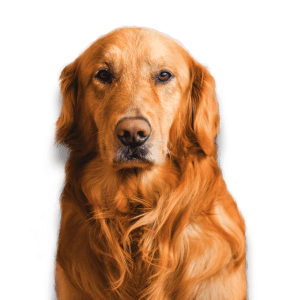Why is it important?
It's really scary when you find your dog suddenly injured or hurt - but if you know how to respond immediately (in the minutes before you can get them to your vet), that can make all the difference to whether they survive or not. So, here's our guide to emergency first aid! There are a series of basic steps you can take that will allow you to work through most types of injury and give your dog the best chance. If at any stage, however, you're unsure what to do or you're worried about your dog - CALL YOUR VET!
(1) Are you in any danger?
If you become a casualty yourself, you aren't helping your dog! Key things to watch out for are traffic (stop the traffic or at least make sure the road is clear before running to your injured pet); deep water (don't go in out of your depth); electricity (make sure the power is off); and sharp drops or cliffs (don't fall over yourself!). In addition, frightened or painful dogs are much more likely to bite or snap, even without meaning to. So, make sure you can hold your dog's muzzle, and consider using a tie, a belt or a strip of bandage as a temporary muzzle.
(2) Does your dog need CPR?
This is the good old ABC - Airway (can they breathe? If not, extend their head and neck and try to clear any obstruction), Breathing (watch for the movement of the chest and feel for airflow from the nose or mouth), and Circulation (feel their heartbeat behind the left elbow, and their pulse in the groin). If they're not breathing or have no pulse, CALL FOR HELP, then start CPR until it arrives. To breathe for your dog, hold their mouth shut and breathe into their nose until you see their chest rise - usually about 10 breaths per minute. If they have no pulse, you must perform chest compressions - just like in humans, 100 compressions per minute.
(3) How bad is the injury?
Assuming they aren't actually dying, check your dog over and try to work out what other injuries they have. At this point, concentrate on things that might be fatal - severe bleeding, chest or head injuries, or crushing injuries.
(4) Stop the bleeding.
If a major artery is cut, a dog can bleed to death in 2-3 minutes. So, if there is significant bleeding from anywhere, stop it. As a general rule of thumb, if it oozes, it's unlikely to be dangerous; if it trickles, try and stop it, if it gushes or spurts, it needs to be stopped NOW! The best way to stop bleeding is by applying firm pressure to the injury, ideally through a clean cloth or pad to spread the pressure. DO NOT remove your hand or the pressure until 5 minutes after you're certain the bleeding has stopped, or you may pull the clot away and make it start again.
(5) Manage any wounds.
Open wounds that aren't bleeding dangerously should be covered with a sterile dressing if possible, and a clean cloth if not; and then left until we can assess them. If there's a foreign object embedded in the wound, DO NOT pull it out unless we tell you to - it may be controlling the bleeding. Burns need to be managed differently - cool the burn with lots of water, and then wrap it in cling film to protect the area.
(6) Stabilise fractures.
Most of the time, if your dog has an obviously broken bone, leave it well alone! However, if a limb is wobbling dramatically, you may need to put a splint on it. Don't do this until you've spoken to your vets, who will talk you through the process if needed.
(7) Get them to a vet so they can work on the patient!
There's a limit to what you can do "in the field" as it were. The best place for any injured dog is at the surgery, where they have the staff and the equipment to treat your dog properly. The best thing you can do, therefore, is take them to a vet. If they aren't able to walk on their own, try and lift them on a rigid board or plank rather than a bendy blanket (which can worsen spinal injuries) - they'll be able to advise you if necessary.
In conclusion:
If your dog survives to reach a vets' surgery, there is a good chance they can be saved - but what you do in the first few minutes after an accident or injury can make all the difference.


